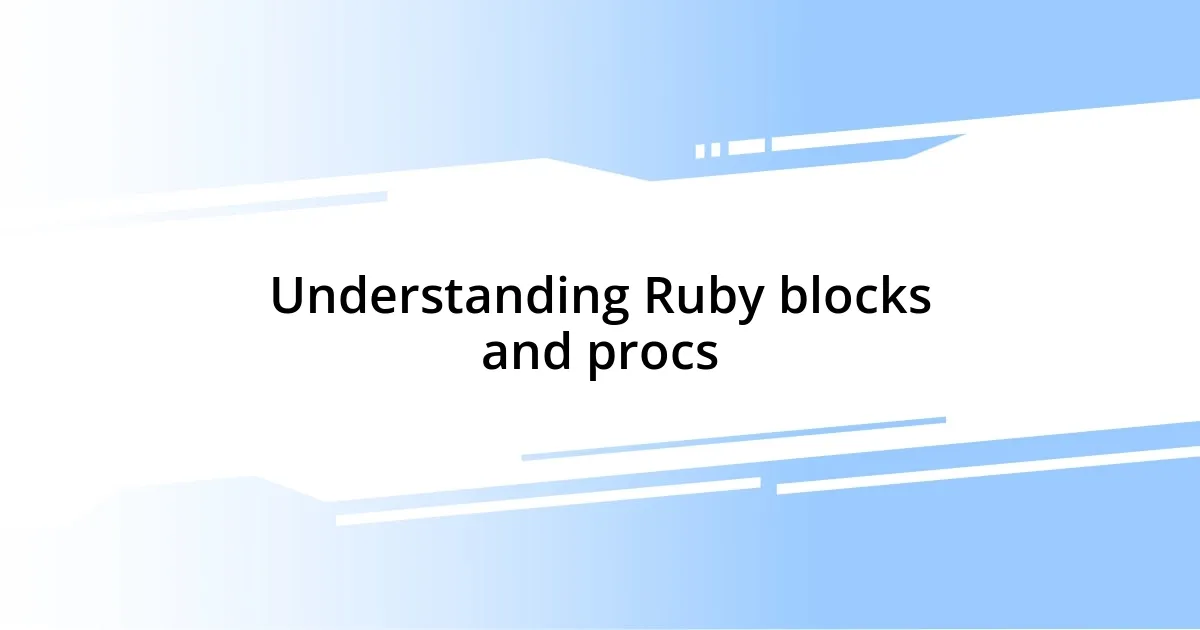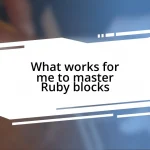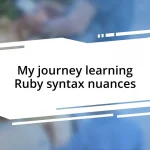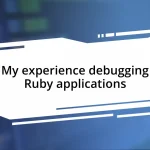Key takeaways:
- Ruby blocks allow the passing of code to methods, enabling flexible logic without hardcoding.
- Procs are objects that encapsulate blocks, facilitating reuse and complex operations.
- Understanding these concepts enhances programming flexibility and enriches the coding experience.

Understanding Ruby blocks and procs
Ruby blocks and procs are powerful tools that enhance the flexibility of your code. When I first encountered them, I was amazed at how they allowed me to encapsulate behavior and pass it around like an object. It felt like discovering a secret code—once I realized their potential, my entire approach to coding in Ruby shifted.
A block is a chunk of code that you can pass to methods, often enclosed in either braces or do…end. I remember one particular late-night coding session where I used a block to filter an array of numbers. It was thrilling to see how easily I could define the logic inside the block, allowing my method to adapt without hardcoding values. Isn’t it satisfying when code flows so seamlessly?
On the other hand, procs are objects that encapsulate blocks. This distinction initially puzzled me. I wondered, why use a proc at all? But then I found that procs could be stored in variables, allowing for more complex operations and reusable code. It’s like having a toolkit at your fingertips! Engaging with these concepts has truly enriched my programming experience and I hope you embrace them too.














